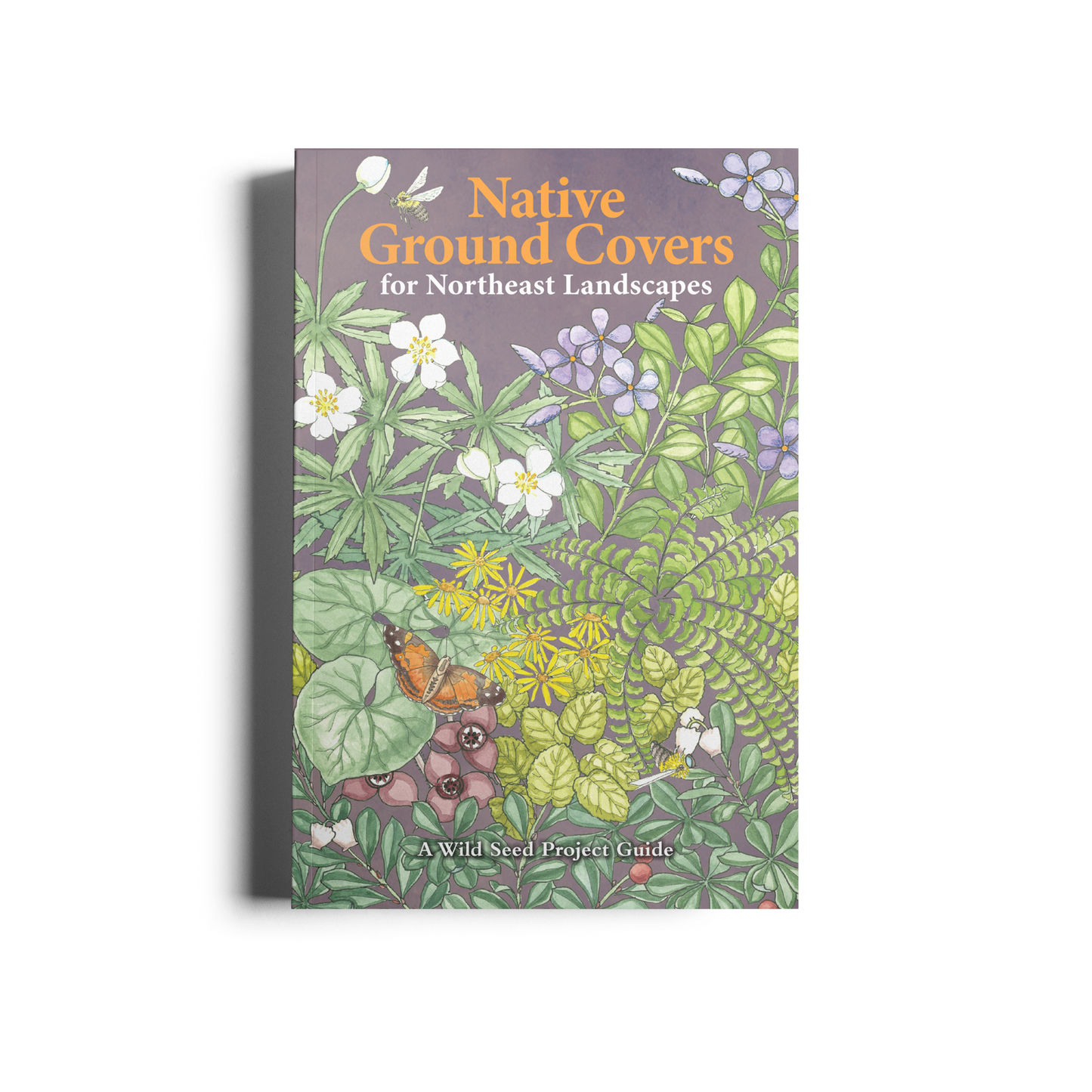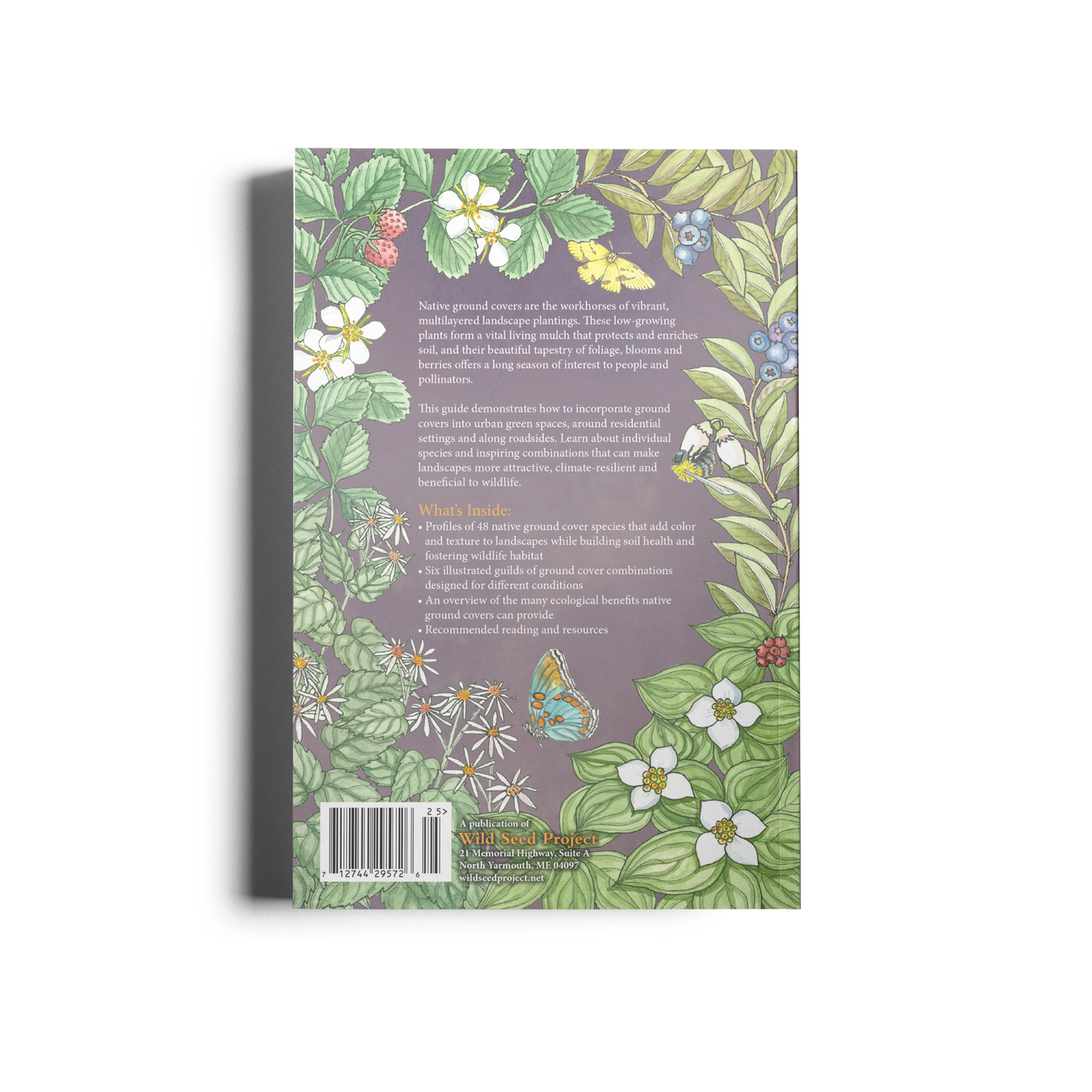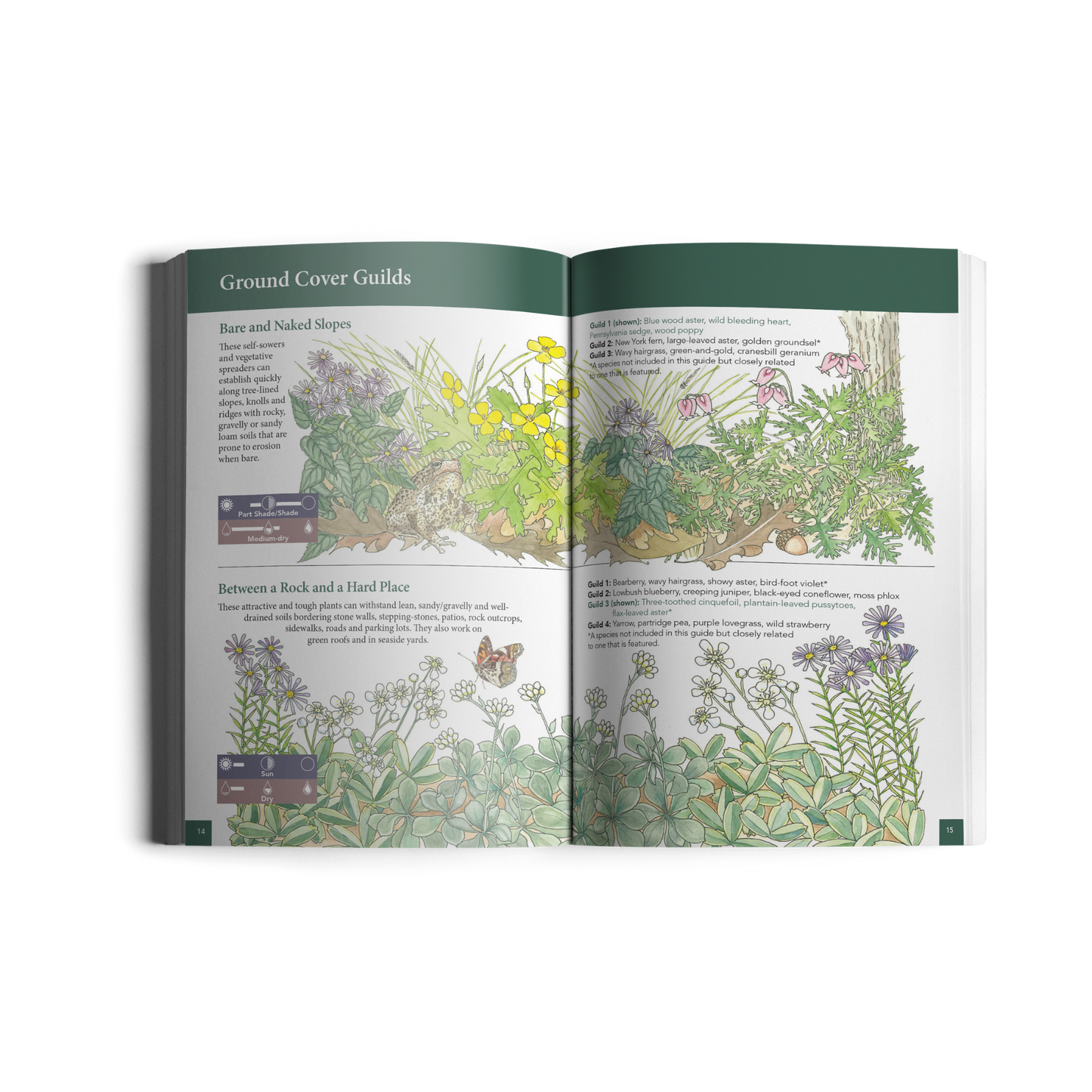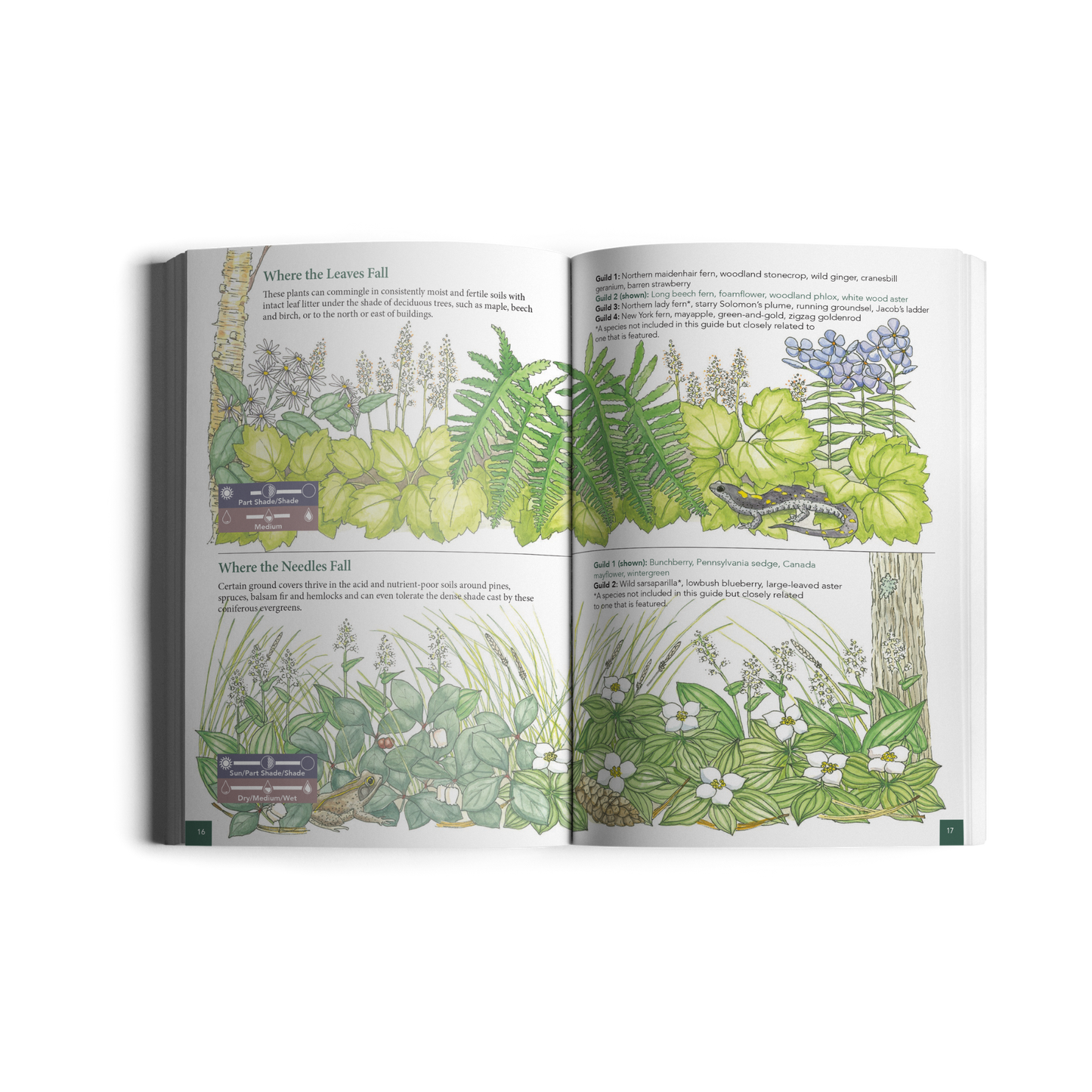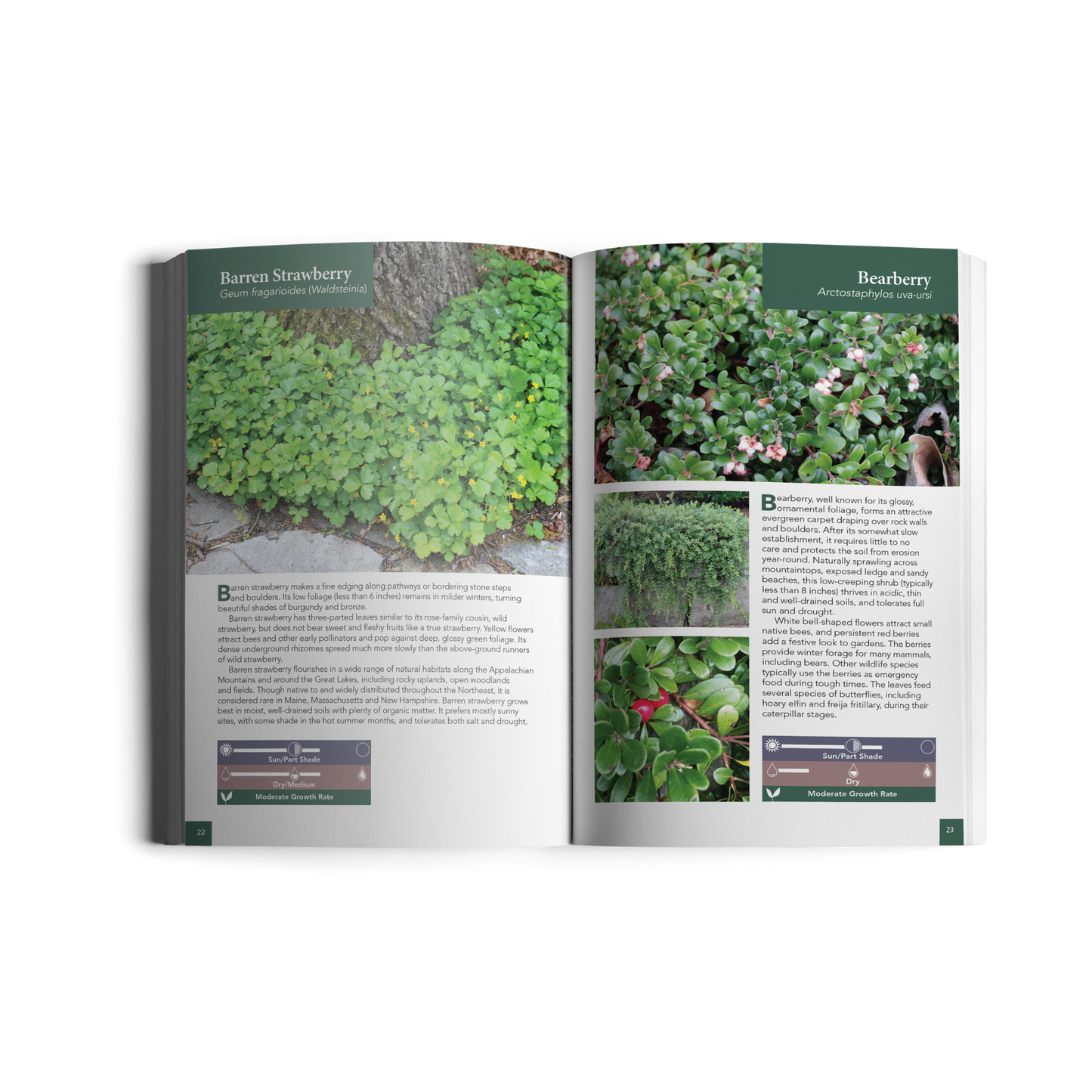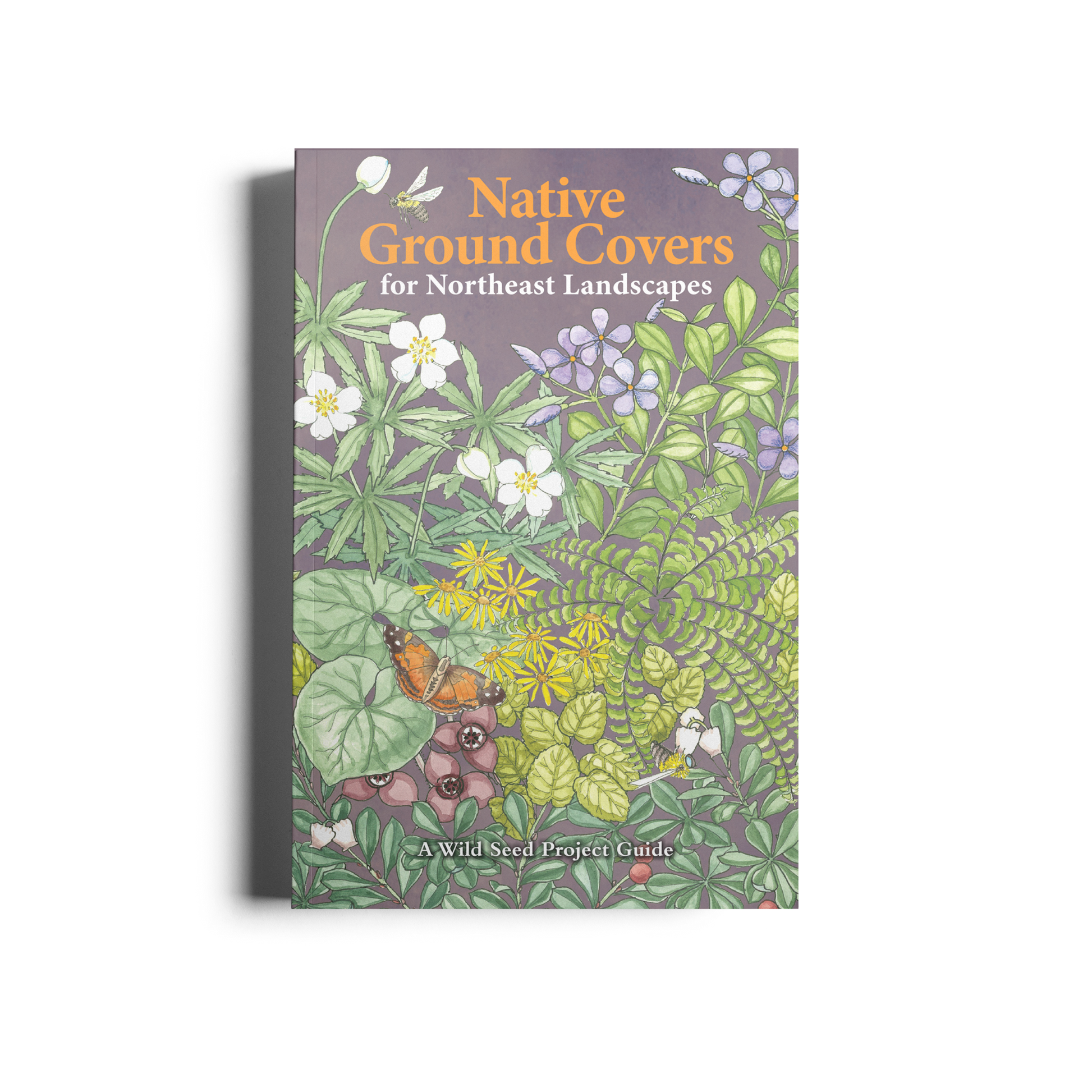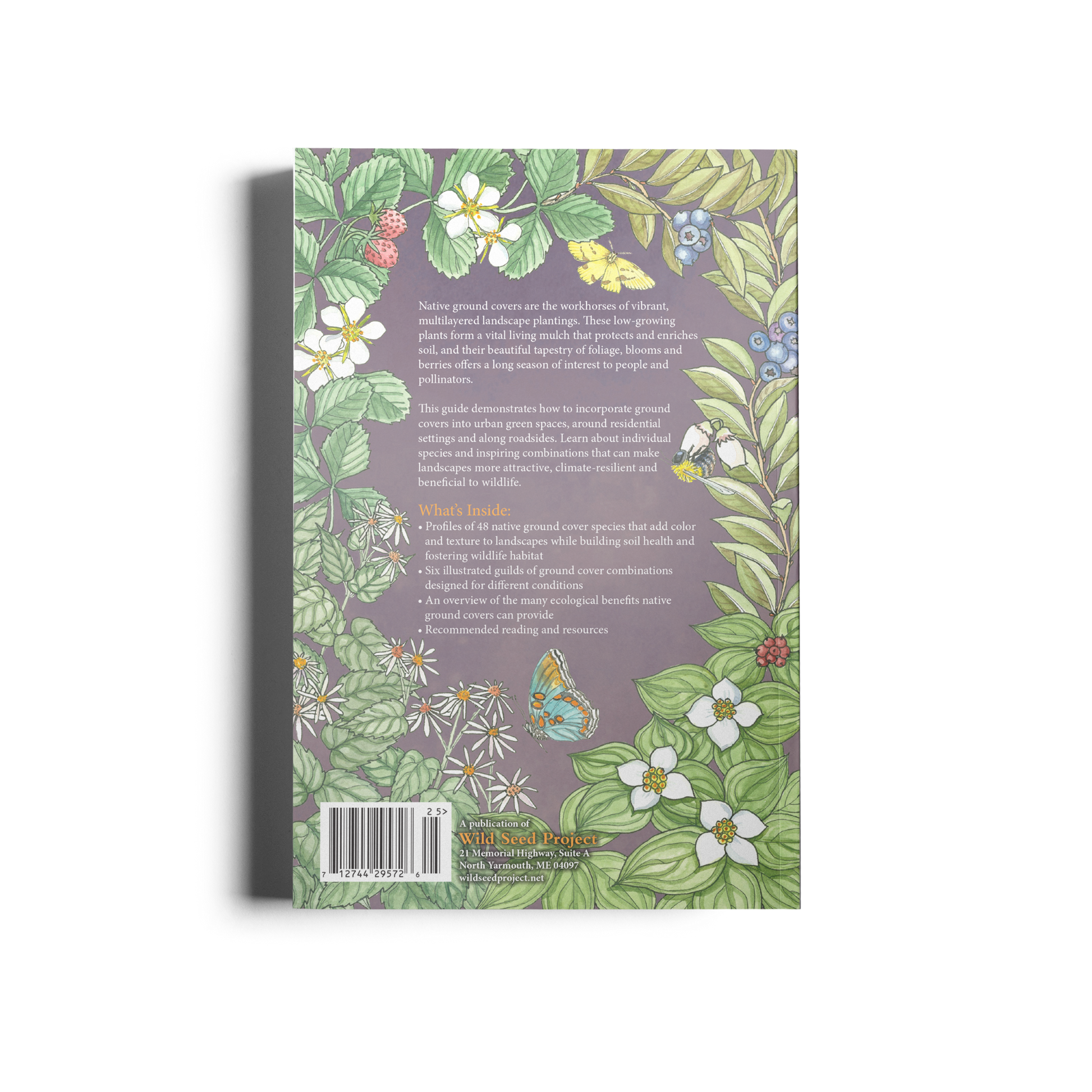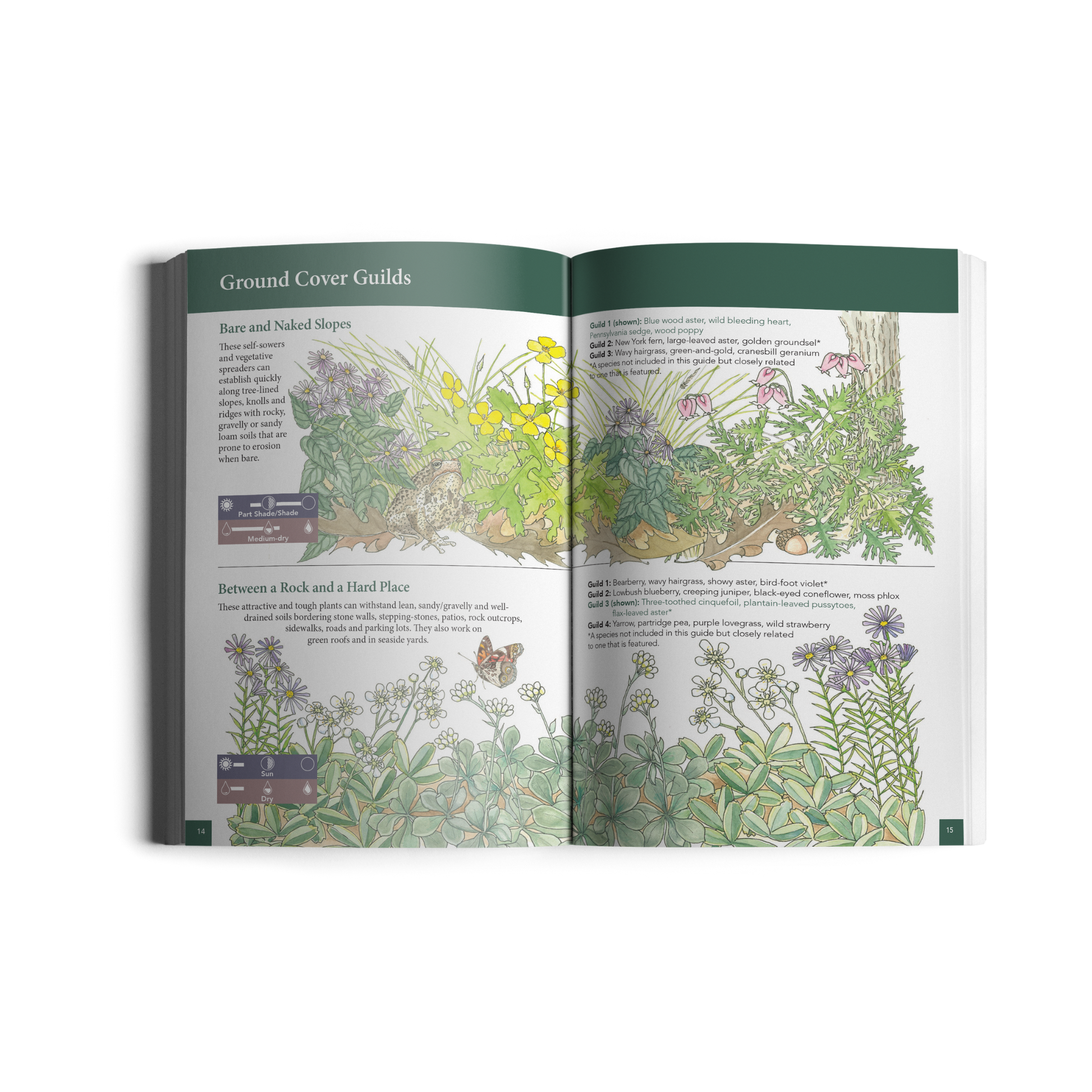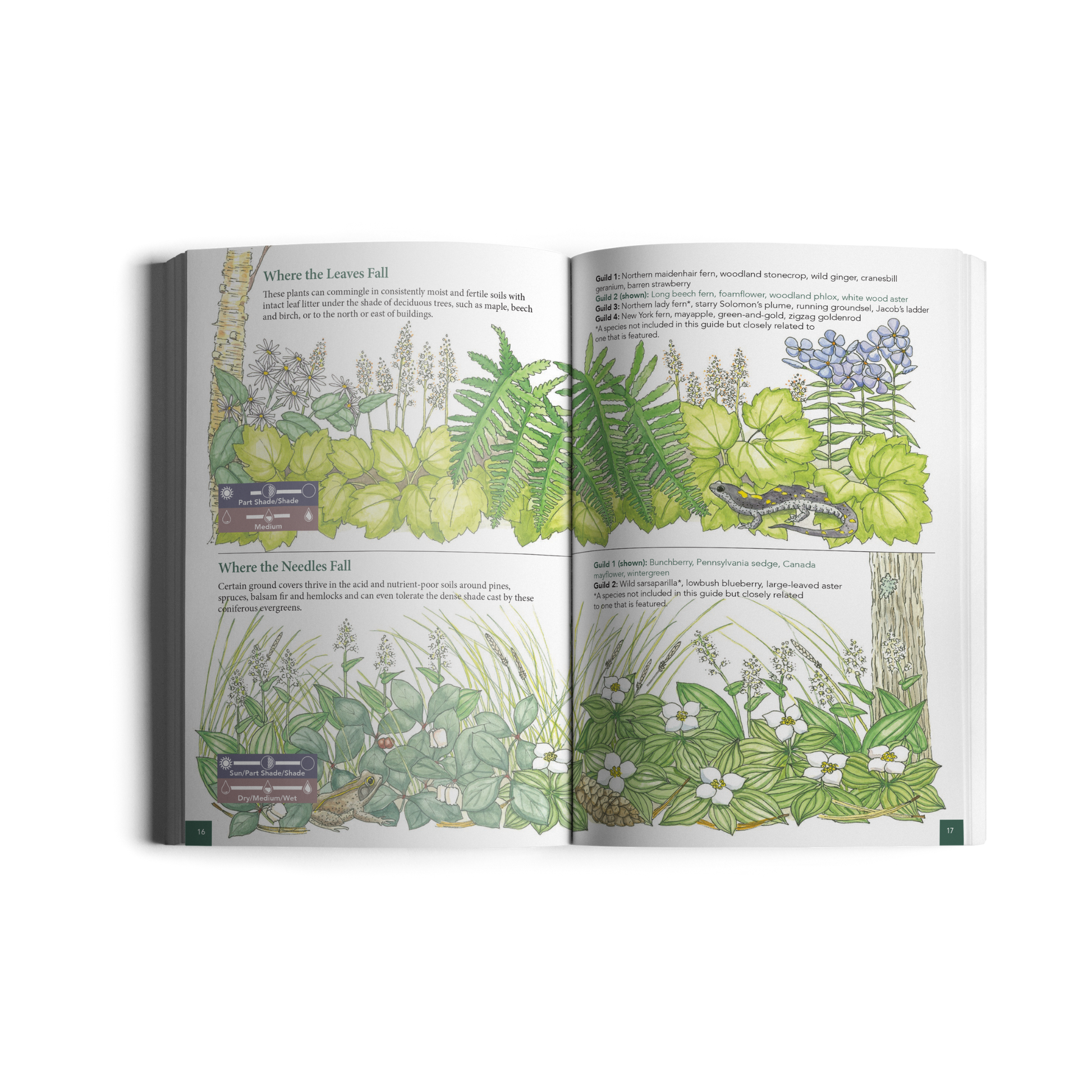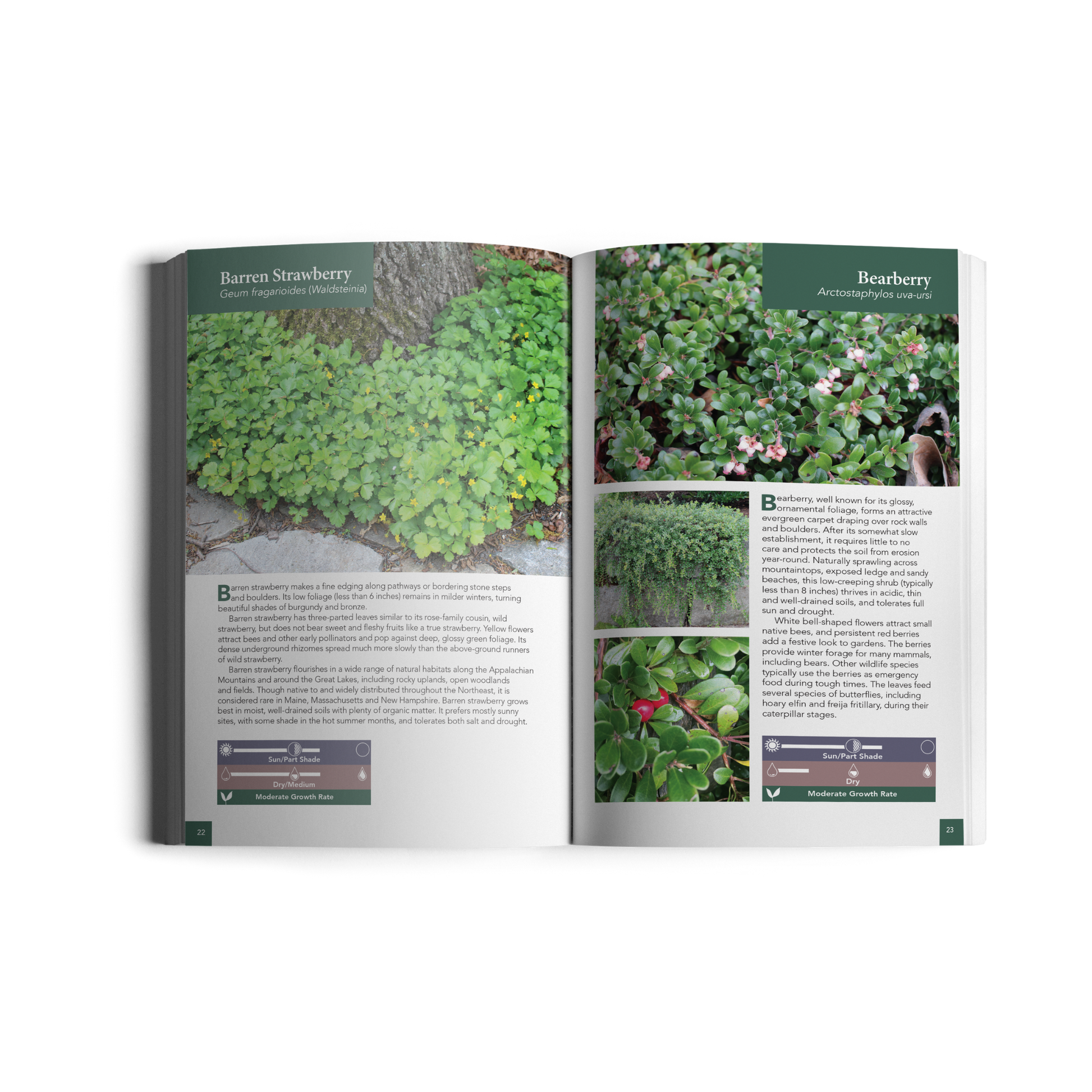1
/
of
5
Native Ground Covers for Northeast Landscapes: A Wild Seed Project Guide
Native Ground Covers for Northeast Landscapes: A Wild Seed Project Guide
Regular price
$ 20.00 USD
Regular price
Sale price
$ 20.00 USD
Unit price
/
per
Shipping calculated at checkout.
In stock
(0 in cart)
Couldn't load pickup availability
Native ground covers are the workhorses of vibrant, multi-layered landscapes, offering a rich alternative to monoculture lawns. These low-growing plants form a vital living mulch that protects and enriches soil, and their beautiful tapestry of foliage, blooms and berries offers a long season of interest to people and pollinators.
This guide demonstrates how to incorporate ground covers into biodiversity efforts in urban green spaces, around residential settings and along roadsides. Learn about individual species and inspiring combinations that can make landscapes more attractive, climate-resilient and beneficial to wildlife.
What’s Inside:
- Profiles of 48 native ground cover species that add color and texture to landscapes while building soil health and fostering wildlife habitat
- Six illustrated guilds of ground cover combinations designed for different conditions
- An overview of the many ecological benefits native ground covers can provide
- Recommended reading and resources
- 64 pages, 6" x 9" booklet
- For wholesale inquiries, please contact shop@wildseedproject.net or complete this form.
